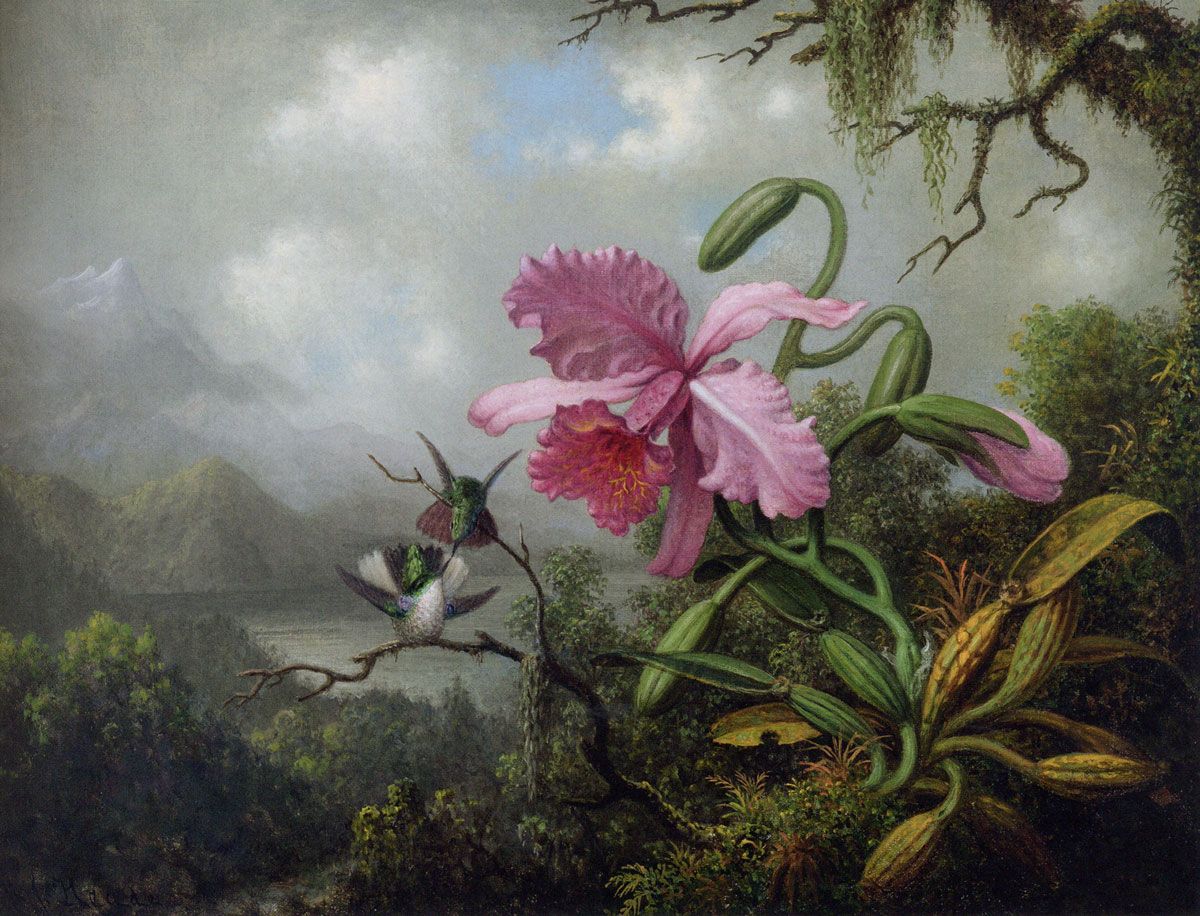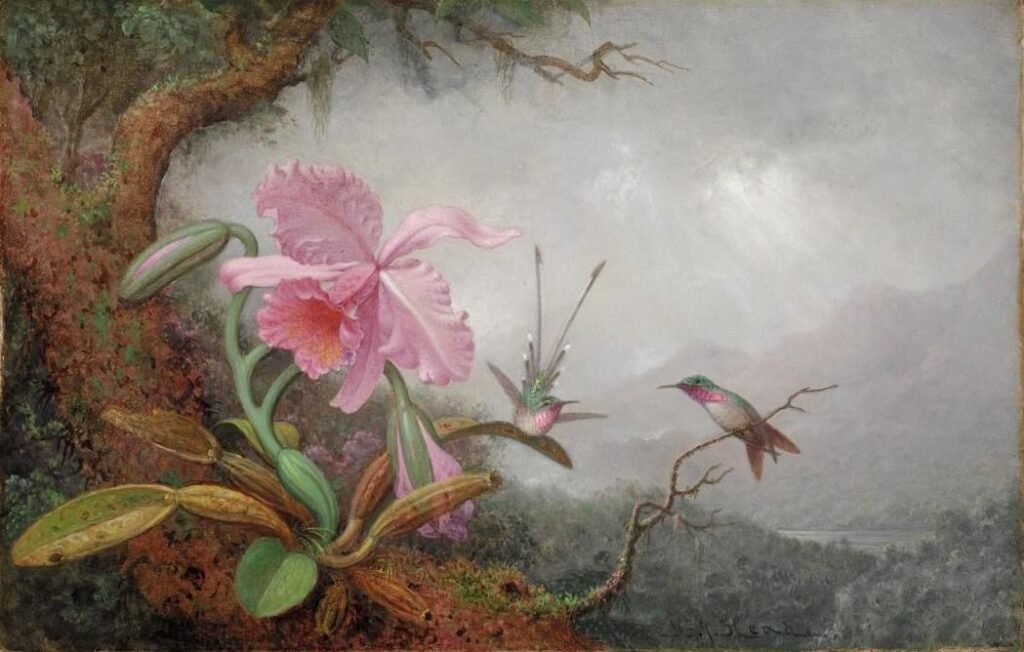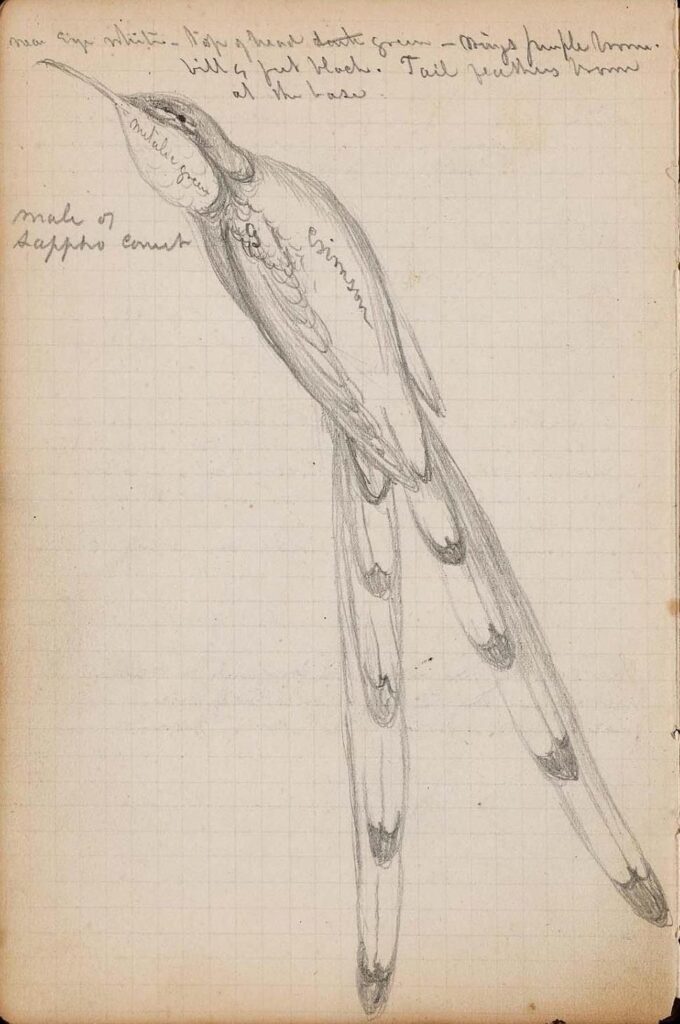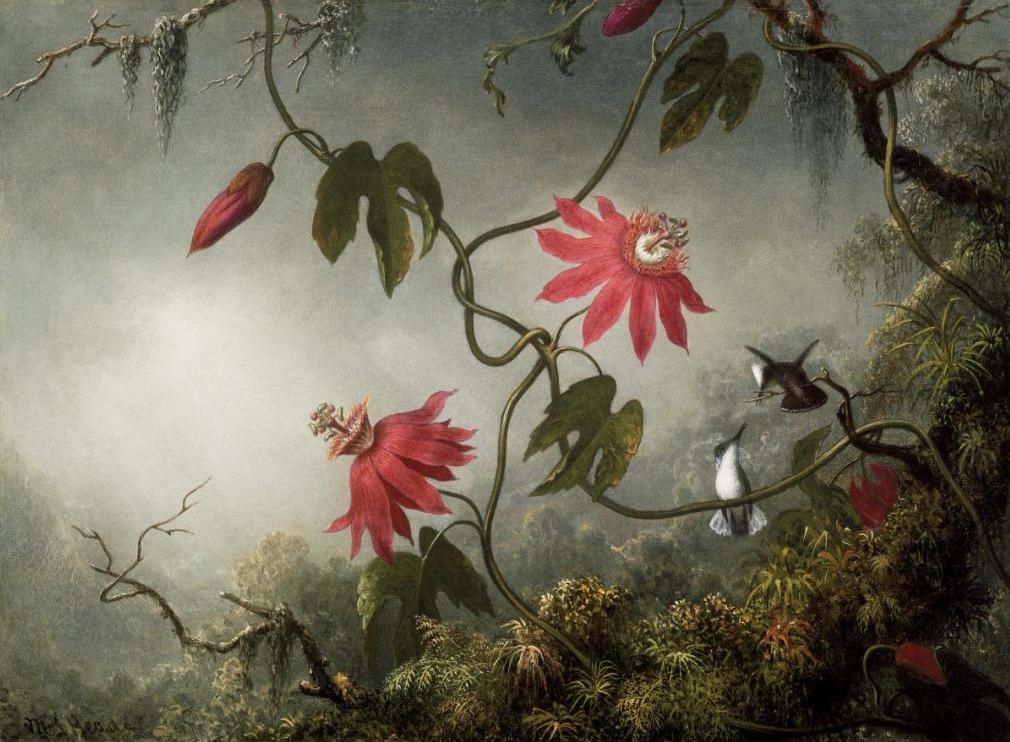
Martin Johnson Heade (1819–1904)
Orchid and Hummingbirds near a Mountain Lake, c. 1875–90
Oil on canvas
McMullen Museum of Art, Boston College, Carolyn A. and Peter S. Lynch Collection, 2022.54

Oliver Wunsch
Assistant Professor, Art History

Inspired by Heade’s travels in Brazil during the 1860s, this painting was equally shaped by the art market that he encountered upon returning to the United States. In a competitive field of American landscape painting that was dominated by better-known contemporaries such as Frederic Edwin Church (1826–1900), Heade needed to find ways to stand out.1 Idiosyncratic views of foreign flora and fauna provided him with a commercially viable path. Heade’s tropical subject matter differentiated him from competitors, but what truly distinguished him was a compositional innovation: juxtaposing detailed studies of orchids and hummingbirds with distant vistas, he created a radical separation between foreground and background. The combination of micro and macro scales allowed Heade to incorporate the conventions of natural history illustration and landscape painting into something that transcended both traditions, turning birds and plants into dramatic actors on an exotic stage.
Though set in nature, these scenes were carefully constructed products of the studio. The orchid in this painting, for example, was transposed from Heade’s stock repertoire of plant studies, which he repeatedly inserted into compositions either by tracing or through another means of mechanical transfer.2 Heade’s Hummingbirds and Orchids in the Detroit Institute of Arts (see image) contains a blossom that matches this one in almost every detail. In fact, the same orchid is present in at least twenty-one of Heade’s paintings—a number that testifies to the commercial success of these works (which may explain the artist’s need for expedient production methods).3
1. For Heade’s efforts to establish a market for himself while in the shadow of Church, see Maggie M. Cao, “Heade’s Hummingbirds and the Ungrounding of Landscape,” American Art 25, no. 3 (2011): 48–75.
2. Karen E. Quinn, “Passion Flowers,” in Martin Johnson Heade, ed. Theodore E. Stebbins (Boston: Museum of Fine Arts, 1999), 113; Theodore E. Stebbins, The Life and Work of Martin Johnson Heade: A Critical Analysis and Catalogue Raisonné (New Haven: Yale University Press, 2000), 94.
3. Quinn, “Passion Flowers,” 113.

John McCoy
Assistant Director, McMullen Museum

This painting is one in a series of hummingbird and orchid paintings that Heade produced between about 1875 and 1890. Painted more than a decade after his trip to Brazil in 1863, Heade pairs the flowers and birds in an imagined tableau synthesized from earlier sketches (see image), memory, and perhaps external sources. In these fanciful paintings, Heade is free to depict his subjects in a variety of lively poses and to fill the scenes with luminous and saturated color.
The orchid is a ruby-lipped Cattleya. Cattleya is a genus of tropical South American orchids that are epiphytic (growing on other plants). They are not parasites, however, deriving their nutrients from the air, rain, and dust that fall on them. Like the hummingbirds, the orchids “travel” by flight, their microscopic seeds floating from tree to tree. This orchid variety is known for its large, showy flowers. Christopher Clark, associate professor of evolution, ecology, and organismal biology at University of California Riverside, identifies the top bird as possibly a black-throated mango and the bottom as a black-eared fairy. Heade probably mistakenly thought the two were from the same species. Clark also notes that while Heade paints the birds with six tail feathers on either side, all hummingbirds actually have two sets of five.
Heade painted many dozens of similar scenes, most often with varieties of Cattleya orchids, but also several featuring passion flowers (see photo). In these scenes he portrays tropical jungles emerging from gray mist which all but obscures the mountains. These atmospheric effects emphasize the depth of view, setting off the vibrancy of the birds and flowers.


